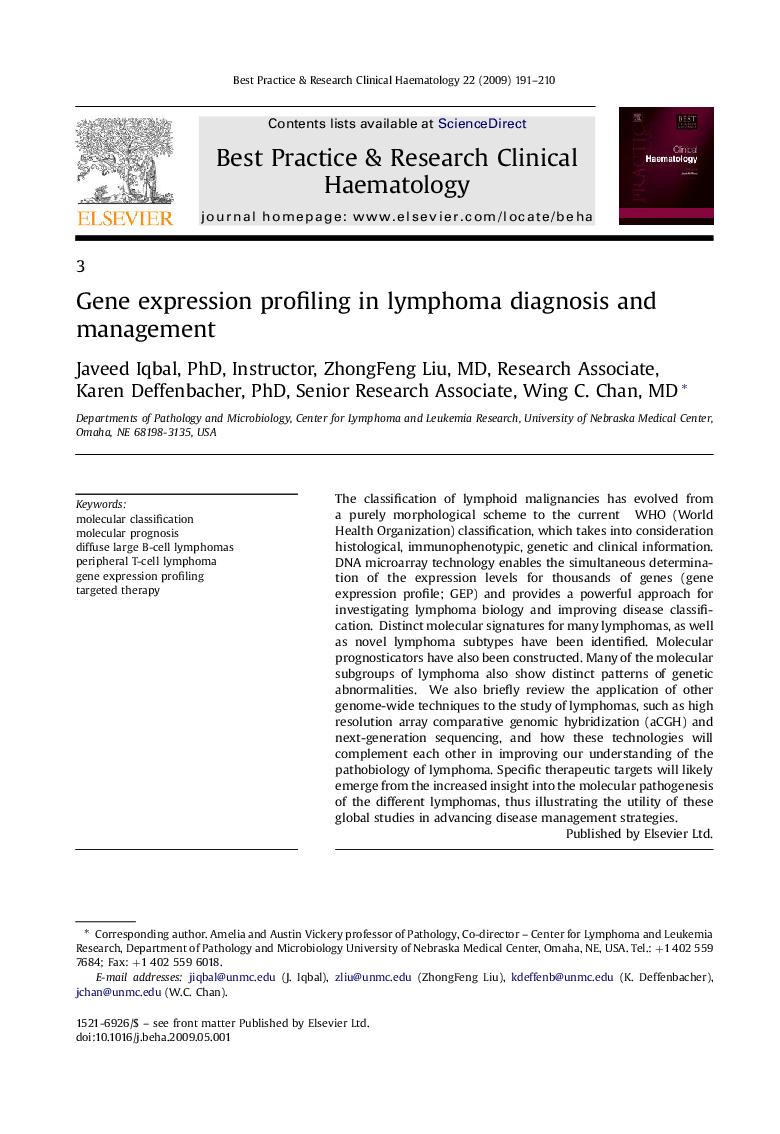| Article ID | Journal | Published Year | Pages | File Type |
|---|---|---|---|---|
| 2100160 | Best Practice & Research Clinical Haematology | 2009 | 20 Pages |
The classification of lymphoid malignancies has evolved from a purely morphological scheme to the current WHO (World Health Organization) classification, which takes into consideration histological, immunophenotypic, genetic and clinical information. DNA microarray technology enables the simultaneous determination of the expression levels for thousands of genes (gene expression profile; GEP) and provides a powerful approach for investigating lymphoma biology and improving disease classification. Distinct molecular signatures for many lymphomas, as well as novel lymphoma subtypes have been identified. Molecular prognosticators have also been constructed. Many of the molecular subgroups of lymphoma also show distinct patterns of genetic abnormalities. We also briefly review the application of other genome-wide techniques to the study of lymphomas, such as high resolution array comparative genomic hybridization (aCGH) and next-generation sequencing, and how these technologies will complement each other in improving our understanding of the pathobiology of lymphoma. Specific therapeutic targets will likely emerge from the increased insight into the molecular pathogenesis of the different lymphomas, thus illustrating the utility of these global studies in advancing disease management strategies.
